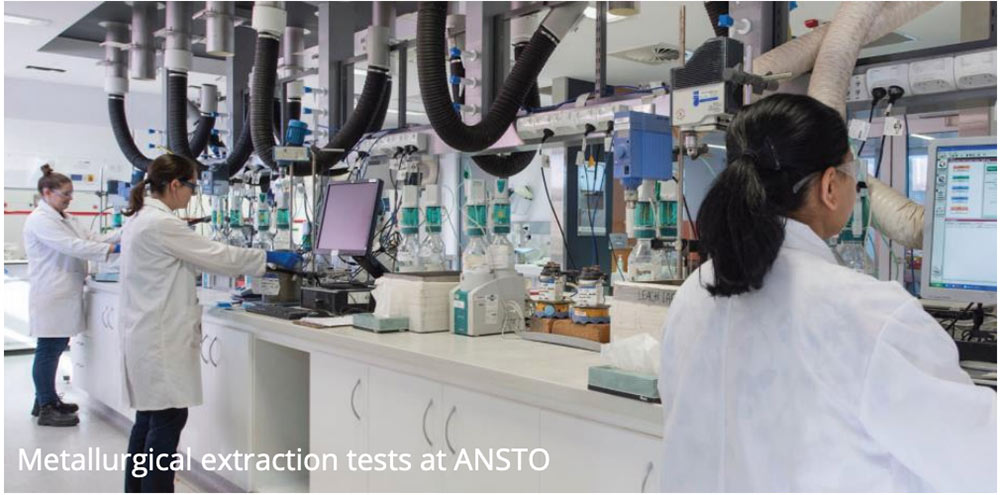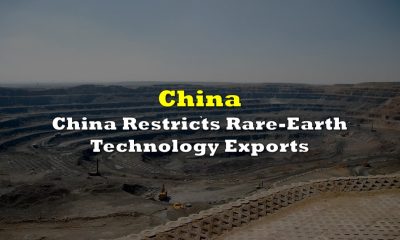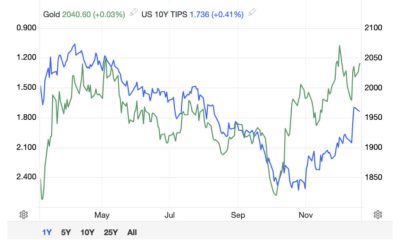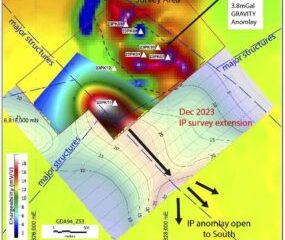Energy & Critical Metals
Not all ionic clay rare earths deposits are created equal. Here’s why ASX investors need to read the fine print
A simple lab test is required to see if an ionic clay REE deposit is a doozy or a dud … Read More
The post Not all ionic clay rare earths deposits are…

- Ionic clay hosted (IAC) rare earth projects can have advantages over their hard rock counterparts, but metallurgy is crucial
- A simple lab test is required to see whether REEs can be cheaply and easily leached into solution
- And yet the number of ASX stocks doing this test is abysmally small
In 2019, Ionic Rare Earths (ASX:IXR), then a $10m market cap tiddler called Oro Verde, acquired a rare earths (REE) project with a difference.
This one was ionic clay hosted (IAC); something new for ASX investors, but not the industry.
China, which dominates global REE mining and processing, gets most of its supply from IAC deposits in Southern China and neighbouring Myanmar.
These projects have advantages over their hard rock counterparts.
They often contain a higher proportion of magnet earths, and crucially the heavy rare earths; the type critical for use in wind turbines and electric vehicles.
Clay hosted deposits are also easier to explore, drill and mine.
Processing is also ostensibly cheaper. This can more than offset the far lower grades – ~ 0.1% versus hard rock mines which can be between 2-10%.
By 2021, IXR was still the only IAC stock on the ASX, but by this time it was worth well over $100m as its flagship project moved through the development process.
Then, in mid 2021, Australian Rare Earths (ASX:AR3) hit the bourse as clay REE stock #2.
Since then, a small avalanche of ASX explorers have entered the clay REE space.
READ: Why are ASX stocks so in love with clay rare earths projects? A punter’s guide
Ionic Rare Earths (ASX:IXR) and Australian Rare Earths (ASX:AR3) share price charts
What is an ionic deposit?
No clay REE deposit exists purely as ‘ionic’. They are formed as nature and time weather a REE-rich hard rock source, like granite, into three distinct phases.
The adsorbed (ionic) phase is easily, quickly and cheaply desorbed with a salt solution at pH4, for instance.
Thuen you have a secondary mineral phase. Here, as the minerals release the rare earths as they break down, which then form a secondary mineralisation.
These rare earths can be extracted with a modest pH solution, which is more expensive, but doable.
Finally, there is a resistive phase. That’s the mineral containing rare earths which hasn’t been broken down. This stuff is uneconomic to extract at the low grades characteristic of IAC deposits.
Which means not all clay hosted rare earths deposits are created equal.
In fact, some ASX IAC projects could be total duds.
To determine whether an IAC project is economic or not – whether it has a large proportion of the first two phases mentioned above — a simple, easy metallurgical test is required.
“There’s no point having [a decent proportion] of clays that aren’t ionic,” IXR’s Tim Harrison told Stockhead.
“It is very easy to determine via test work, how much is ionic and then potentially whether there are other secondary rare earths minerals there which can be mobilised, can be solubilised, by adding a little bit of acid,” he says.
The challenge with that is when you add acid you are adding cost and also increasing the amount of impurities which go into the leach liquor.
“Those impurities then manifest in potentially higher downstream product purity costs,” Harrison says.
“It is a fine line, a balancing act between getting the right leaching conditions to try and maximise the amount of rare earths you can extract from the clay, and the trade-off on the cost of then dealing with the impurity elements.”
And yet to number of ASX stocks prioritising this simple test is abysmally small.

AR3 founder and boss Rick Pobjoy says this humble $400 test, via labs like ANSTO and ALS, was the very first thing the company did after discovering clay REEs at its flagship Koppamurra project in South Australia.
“Before we even pegged the ground two years ago, me and my co-founder had the materials tested at pH4 and pH1, at ambient temperatures and pressures to establish whether there were any rare earths coming into solution,” he told Stockhead.
“We didn’t want to waste any of our own money. That was a very cheap, very quick test to do.
“And the frustration for us is that there are dozens of explorers who continue to drill, and drill, and release assay results who aren’t doing the simple test required to establish whether you can bring rare earths into solution at ambient temperatures and pressures.
“Because if you can’t do that, economically you don’t have a project.”
Pobjoy says the testing indicates between 20-30% of REEs are in this adsorbed phase at Koppamurra.
Including the secondary mineralised phase, 85% of mineralisation can be easily addressed at ambient temperatures and pressures.

Why aren’t ASX explorers doing the work?
Some explorers have done the testing, which Pobjoy says should be an absolute priority, before anything else.
But not many.
“Before we (AR3) spent any more time or money after discovering Koppamurra, before we pegged the tenure, we had that test done,” he says.
“Without that easy washing, leaching desorption characteristic it was nothing, just a curiosity.
“Since then, we have looked at several other potential projects. We got involved in one in WA but ruled it out after having some of the material diagnostic leached tested.
“Nothing came out, so that was it. We drew a line through it.”
Pobjoy says retail investors should be looking for this metallurgical test work in an ASX explorer’s announcements.
“It is not sufficient to have just the grade, or a good assemblage – like plenty of magnet and heavy rare earths in the mix,” he says.
“It is not sufficient to have great thickness or low strip ratios, which are important as well.
“I do hope retail investors can understand the important component is leachability, because it will make or break a project.
“You may have heard the saying ‘rare earths aren’t rare’ and that’s true, but what is rare is deposits that can be produced from economically.”
Bonus tip: Beware the Aqua Regia test
Some companies are quoting recoveries based on what they are calling ‘weak aqua regia’, Pobjoy says.
Aqua regia is a combination of three strong acids combined.
“They are quoting 80-90% recoveries, but weak aqua regia will dissolve just about everything, expect maybe monazite,” he says.
“It is not a process you would apply to a producing mine; it’s a lab assay technique.
“I don’t know why they are pointing to those results. It’s got experts in the field shaking their heads ‘like honestly’.
The post Not all ionic clay rare earths deposits are created equal. Here’s why ASX investors need to read the fine print appeared first on Stockhead.

Uranium Exploration Company Announces Additional Staking in the Athabasca Basin
Source: Streetwise Reports 12/22/2023
Skyharbour Resources Ltd. announced an update from its Canada-based Falcon Project along with additional…
Tesla Launches New Mega Factory Project In Shanghai, Designed To Manufacture 10,000 Megapacks Per Year
Tesla Launches New Mega Factory Project In Shanghai, Designed To Manufacture 10,000 Megapacks Per Year
Tesla has launched a new mega factory…
Giving thanks and taking stock after “a remarkable year”
An end-of-year thank you to our readers, industry colleagues and advertisers before Electric Autonomy breaks from publishing until Jan. 2
The post Giving…


















